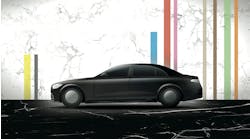In the U.S., we like to think of ourselves as world leaders in many regards. We’re innovative, resilient, tenacious in our pursuits and proud of our success—and we should be proud.
In the automotive realm, we pioneered mass vehicle production and for the better part of a century were the undisputed leader in vehicle manufacturing. Body shops grew out of the automobile’s success and generations of bodymen, painters and other collision repair pros have perfected the art of vehicle repair over the decades.
In the U.S., we know cars. They are an integral part of our nation’s history. That pride can make it easy for shop operators to discredit collision repair operations in other parts of the world. During the 2014 Collision Repair Executive Symposium at NACE in Detroit a couple of months ago, one of the speakers mentioned a shop in India that incorporated wooden materials and an elephant (for pulling) to fix a vehicle. That sort of thing happens, but there are also many shops beyond our borders that we can learn from. In fact, it is often said that the U.S. lags behind shops in parts of Europe by a good decade in terms of repair processes because of market pressures that eventually make their way to the states.
Learning from shops around the world is the focus of this month’s cover story. We found five collision repair operations in five different countries and dove into how they work, the challenges they face, the trends they see and what they are doing to succeed through it all.
Many of the issues they deal with are the same or similar to those repairers face here in the U.S. As columnist Jon Parker points out, for instance, a massive wave of consolidation reduced the number of shops in the U.K. from about 18,000 in 1990 to 3,500 today. The ones that are left operate under heavy insurer influence, with some contracts going as far as to require the use of specific paint companies.
Some trends might seem frightening, and they may never materialize in the U.S., but there are lessons to be gleaned from the shops that have not only survived, but thrived in such a market. There are lessons to be learned from shops all over the world, even if those lessons are what not to do.
I hope you’ll find this issue insightful, and maybe it will inspire you to think differently about your operation and how you can ensure your own success in the years to come.
Jake Weyer, Editor[email protected]


